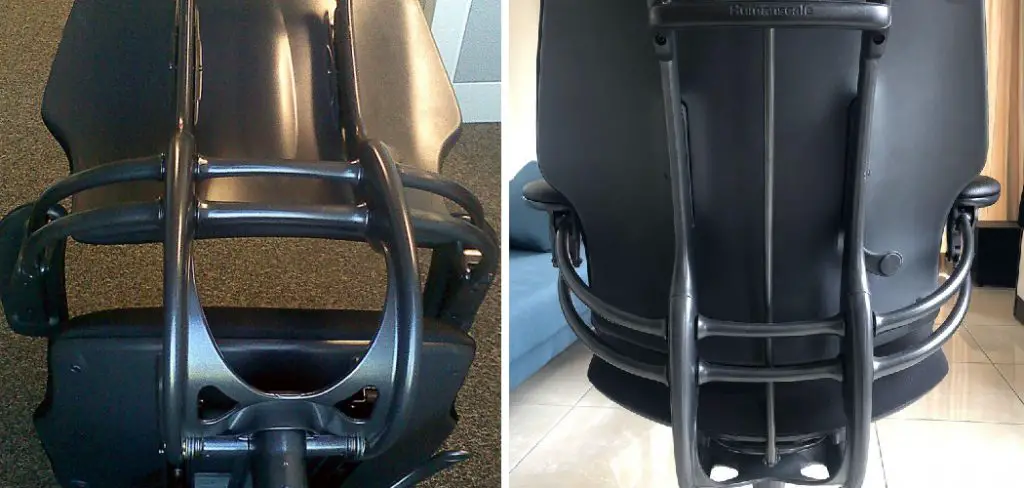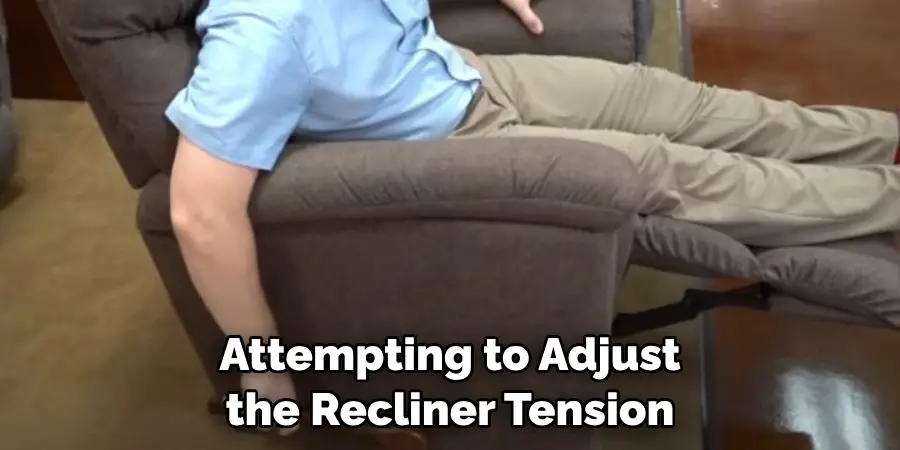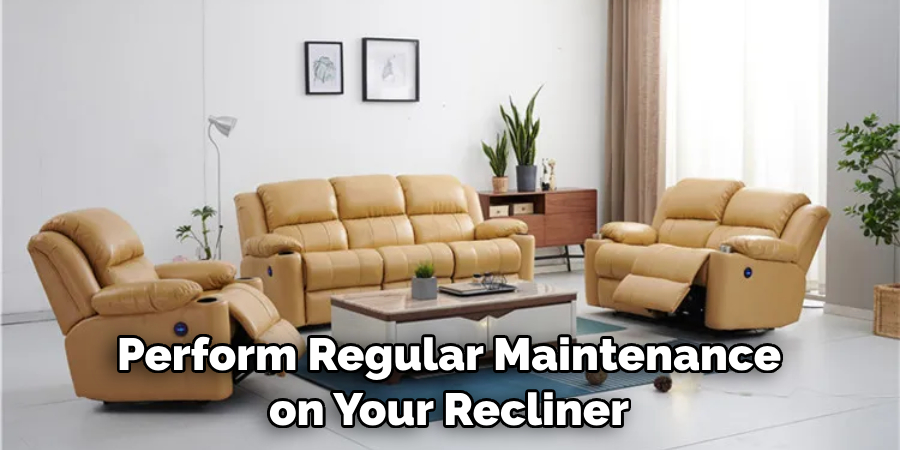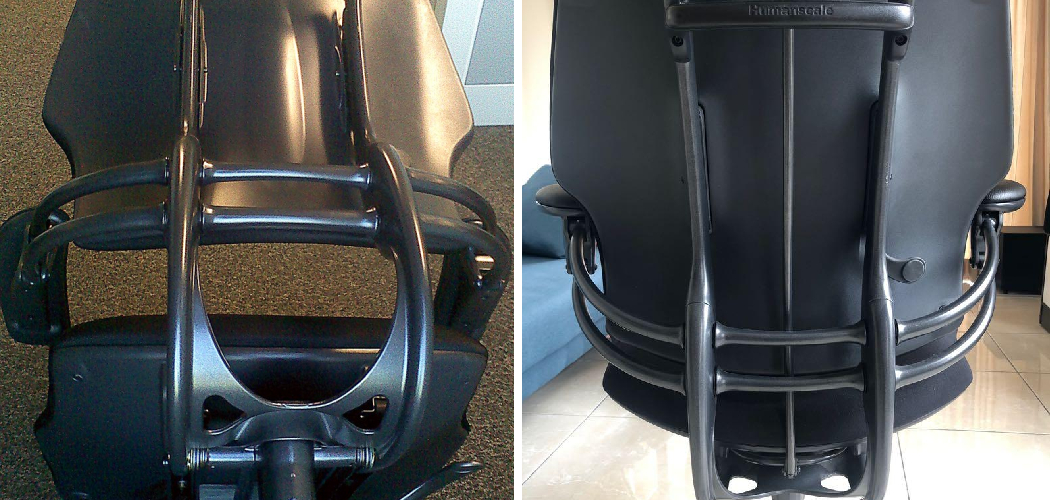Finding the perfect level of comfort in your recliner chair is essential for relaxation and enjoyment. One crucial feature that allows you to customize your seating experience is the ability to adjust the recliner tension.

By adjusting the tension, you can determine the amount of resistance or ease with which the recliner reclines. This article on how to adjust recliner tension for Personalized Comfort will guide you through the process of adjusting recliner tension, helping you find the optimal balance between support and comfort.
Needed Materials and Tools
Given below the list of needed materials and tools:
1. User Manual:
Consult the user manual specific to your recliner model for instructions and guidelines on adjusting the tension.
2. Tools (if required):
Depending on your recliner model, you may need specific tools such as a screwdriver, Allen wrench, or pliers to access and adjust the tension mechanism. Refer to the user manual to determine if any tools are necessary.
3. Safety Precautions:
It’s important to prioritize safety while adjusting recliner tension. Ensure you have a clear workspace, free of any obstacles. You may also want to wear protective gloves to prevent any injuries.
4. Documentation Materials (optional):
Consider keeping a notepad and pen handy to document the adjustments you make, including the direction and extent of each change. This can be helpful for future reference or if you need to revert to a previous tension level.
13 Step-by-step Guidelines on How to Adjust Recliner Tension for Personalized Comfort
Step 1: Familiarize Yourself With the Recliner
Before attempting to adjust the recliner tension, it’s essential to understand the different components and mechanisms of your specific recliner model. Take a close look at the recliner and locate any buttons, levers, or knobs that may be present. Read the manufacturer’s instructions or user manual if available to gain a better understanding of how the tension adjustment works.

Step 2: Assess the Current Tension
Sit in the recliner and pay attention to how it feels when you recline or try to sit up straight. Determine if the tension is too loose or too tight for your liking. This assessment will help you determine the direction and extent of the adjustment needed.
Step 3: Locate the Tension Adjustment Mechanism
Based on your examination of the recliner and the information from the user manual, identify the tension adjustment mechanism. It could be a knob, a lever, or a combination of both. Commonly, the tension adjustment mechanism is located under the seat, on the side, or behind the backrest.
Step 4: Loosen the Tension
If the recliner feels too tight, begin by loosening the tension. Start by turning the tension adjustment knob counterclockwise or pushing the lever in the direction indicated by the user manual. It might be necessary to experiment with different settings to achieve the desired tension level.
Step 5: Tighten the Tension
In case the recliner feels too loose, tighten the tension by turning the adjustment knob clockwise or pulling the lever in the appropriate direction. Again, consult the user manual for specific instructions on adjusting the tension. But make sure you do this properly.

Step 6: Gradual Adjustments
Make small, gradual adjustments to the tension rather than attempting to make significant changes all at once. This will allow you to find the optimal tension level without putting excessive strain on the recliner’s mechanism. If you are not sure about it take help from someone.
Step 7: Test the adjustments
After each adjustment, test the recliner by reclining and sitting up to check if the tension feels comfortable and balanced. Take note of any changes and continue making further adjustments as needed. It is essential to do this carefully. Because the results depends on it.
Step 8: Seek Assistance if Necessary
If you encounter difficulties or are unsure about adjusting the recliner tension on your own, consider seeking assistance from the manufacturer’s customer support or a professional furniture technician. They can provide guidance or carry out the adjustments for you, ensuring proper care and maintenance of the recliner.
Step 9: Document Your Adjustments
Keep a record of the adjustments you made, including the direction and extent of each change. This documentation can be helpful if you need to revert to the previous tension level or if you encounter issues in the future. It is delightful to keep records of your adjustments.
Step 10: Regular Maintenance
Perform regular maintenance on your recliner to ensure its longevity and optimal performance. Dust and clean the recliner regularly, and inspect the tension adjustment mechanism for any signs of wear or damage.

Step 11: Monitor Changes Over Time
Observe the recliner’s tension periodically to check if any adjustments are needed. Over time, the tension mechanism may require further fine-tuning due to natural wear and tear or changes in your preference. It will be very difficult for you if you do not keep the records.
Step 12: Refer to the User Manual
Always refer to the user manual or manufacturer’s instructions specific to your recliner model. Different recliners may have unique mechanisms and requirements, and the manual will provide accurate information and guidelines for adjusting the tension correctly.
Step 13: Safety Precautions
While adjusting the recliner tension, ensure your fingers and hands are clear of any moving parts or pinch points. Take your time, be cautious, and prioritize your safety throughout the process. It is necessary to maintain safety precausitons. Otherwise it could be
Do You Need To Use Professionals?
Adjusting recliner tension can typically be done by following the manufacturer’s instructions and guidelines provided in the user manual. In many cases, you can perform the adjustment yourself without the need for professional help. However, it’s important to exercise caution and prioritize safety throughout the process.
If you feel confident in your ability to adjust the recliner tension and are comfortable following the provided instructions, you can proceed with making the necessary changes.
It often involves locating the tension adjustment mechanism, which may be a knob, lever, or combination of both, and turning or manipulating it in the indicated direction to achieve the desired tension level. Making gradual adjustments and testing the recliner after each change is recommended to find the optimal tension.
However, if you are unsure about adjusting the recliner tension or encounter difficulties during the process, it is advisable to seek assistance from the manufacturer’s customer support or a professional furniture technician. They have the expertise and experience to guide you through the process or perform the adjustments for you, ensuring proper care and maintenance of the recliner.
It’s important to note that some recliners may have complex mechanisms or require specialized tools for adjusting the tension. In such cases, professional help may be necessary to ensure the adjustment is done correctly and to avoid any potential damage to the recliner.

Always refer to the manufacturer’s instructions and guidelines specific to your recliner model for the most accurate information on how to adjust recliner tension properly.
Frequently Asked Questions
Q1: Why Should I Adjust the Recliner Tension?
A1: Adjusting the recliner tension allows you to customize the comfort level and find the optimal balance for your personal preference. It ensures that the recliner provides the right amount of resistance when reclining or sitting up, enhancing your overall comfort and relaxation.
Q2: How Do I Know if the Recliner Tension Needs Adjustment?
A2: You may need to adjust the recliner tension if you feel that it is too loose or too tight when reclining or sitting up. Pay attention to how the recliner feels and assess if it provides the desired level of support and resistance. Trust your comfort and instincts to determine if an adjustment is needed.
Q3: Can I Adjust the Recliner Tension on Any Recliner?
A3: The ability to adjust recliner tension may vary depending on the recliner model and manufacturer. Some recliners offer tension adjustment features, while others may not be adjustable. Consult the user manual or contact the manufacturer to determine if your recliner has a tension adjustment mechanism.
Q4: How Often Should I Adjust the Recliner Tension?
A4: The need for adjusting recliner tension varies from person to person. It is generally a personal preference and depends on changes in your comfort level or any wear and tear experienced by the recliner over time. Monitor the tension periodically and make adjustments as needed to maintain your desired level of comfort.
Conclusion
In conclusion on how to adjust recliner tension, adjusting recliner tension is an important step in ensuring your comfort and satisfaction while using your recliner. By following the manufacturer’s instructions and exercising caution throughout the process, you can achieve the desired level of tension that suits your personal preference.
Throughout this guide, we have emphasized the need to familiarize yourself with your recliner, assess the current tension, and locate the tension adjustment mechanism. Whether you need to loosen or tighten the tension, making gradual adjustments and testing the recliner after each change is key to finding the perfect balance.
If you encounter difficulties or are unsure about adjusting the recliner tension on your own, don’t hesitate to seek assistance from the manufacturer’s customer support or a professional furniture technician. They can provide guidance or carry out the adjustments for you, ensuring proper care and maintenance of the recliner.
Remember to document the adjustments you make for future reference and perform regular maintenance to keep your recliner in optimal condition. By monitoring changes over time and referring to the user manual, you can address any necessary adjustments and ensure long-lasting comfort.

